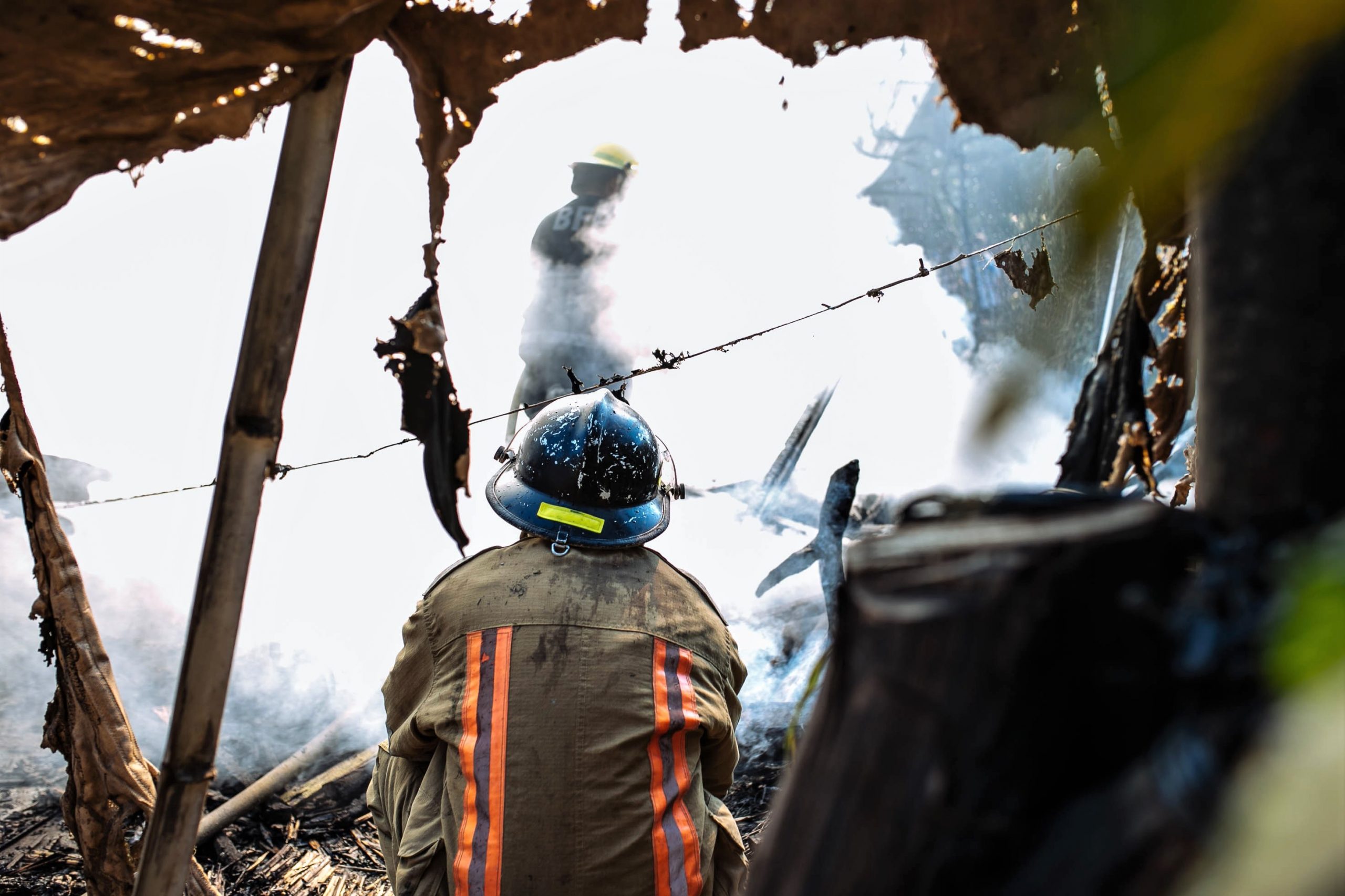
Rescuer safety: rates of PTSD (post-traumatic stress disorder) in firefighters
Post-traumatic stress disorder (PTSD) is a disorder listed in the DSM-5 in the chapter on trauma and stress-related disorders
Formerly also called war neurosis, because it was often observed in soldiers engaged in battle, PTSD is a disorder that usually manifests its symptoms following a particularly traumatic event, an event that interrupts the natural flow of a person’s life.
For example, being bombed, surviving a building collapse, being in an accident or being sexually assaulted.
It was not until the Vietnam War, where very high rates of PTSD were recorded in American soldiers, that the disorder began to become known and become a subject of public debate.
Finally, it was only after the introduction of the DSM-III in 1980 that post-traumatic stress disorder was officially introduced and recognised.
One group of people who may experience many traumatic events as part of their work and therefore be at high risk for PTSD are firefighters.
PTSD, a study of US firefighters examined the type of traumatic events they experienced
Many had been exposed to incidents of crime victims, people who were ‘dead on arrival’ (where death was not due to natural causes), incidents where there were serious injuries, and some also reported experiencing the stress associated with giving medical care to children and infants.
Another study found that firefighters generally reported that medical emergencies and motor vehicle accidents were the most upsetting types of calls they received.
Studies have found that anywhere between approximately 7% and 37% of firefighters meet the criteria for a current diagnosis of PTSD.
Risk factors for PTSD among firefighters
- Previously being treated for another disorder.
- Starting work as a firefighter at a young age.
- Being unmarried.
- Holding a supervisory degree in the fire service.
- Near death during a traumatic event.
- Experiencing feelings of fear and horror during a traumatic event.
- Experiencing another stressful event (e.g., loss of a loved one) after a traumatic event.
- Holding negative beliefs about oneself (e.g., feeling inadequate or weak).
Protective factors for PTSD among firefighters
One of the most important protective factors is the social support available at home or through work.
In addition, it has also been found that having effective coping strategies available can reduce the impact of experiencing multiple traumatic events.
Treatment of acute stress disorder
Self-care: personal safety, physical health and awareness
Debriefing or supportive interviews by psychologists or psychotherapists
Pharmacological treatment after psychiatric examination
Many individuals heal once they are removed from the traumatic situation, when they are shown understanding and empathy and given the opportunity to describe the event and how they reacted to the trauma.
Article written by Dr Letizia Ciabattoni
Read Also:
Emergency Live Even More…Live: Download The New Free App Of Your Newspaper For IOS And Android
Anxiety: A Feeling Of Nervousness, Worry Or Restlessness
Firefighters / Pyromania And Obsession With Fire: Profile And Diagnosis Of Those With This Disorder
Hesitation When Driving: We Talk About Amaxophobia, The Fear Of Driving
Sources:
https://healthy.thewom.it/salute/disturbo-stress-post-traumatico/
Bryant, RA, & Guthrie, RM (2007). Autovalutazioni disadattive prima dell’esposizione al trauma prevedono il disturbo da stress post-traumatico. Journal of Consulting and Clinical Psychology, 75, 812-815
Bryant, RA, & Harvey, AG (1995). Stress post-traumatico nei pompieri volontari: predittori di sofferenza. Journal of Nervous and Mental Disease, 183, 267-271
Corneil, W., Beaton, R., Murphy, S., Johnson, C., & Pike, K. (1999). Esposizione a incidenti traumatici e prevalenza della sintomatologia da stress post-traumatico nei vigili del fuoco urbani in due paesi. Journal of Occupational Health Psychology, 4, 131-141
Del Ben, KS, Scotti, JR, Chen, Y., & Fortson, BL (2006). Prevalenza dei sintomi del disturbo da stress post-traumatico nei vigili del fuoco. Lavoro e stress, 20, 37-48
Haslam, C., & Mallon, K. (2003). Un’indagine preliminare sui sintomi dello stress post traumatico tra i vigili del fuoco. Lavoro e stress, 17, 277-285
Heinrichs, M., Wagner, D., Schoch, W., Soravia, LM, Hellhammer, DH, e Ehlert, U. (2005). Previsione dei sintomi di stress post-traumatico da fattori di rischio pretraumatico: uno studio prospettico di follow-up di 2 anni nei vigili del fuoco. American Journal of Psychiatry, 162, 2276-2286



